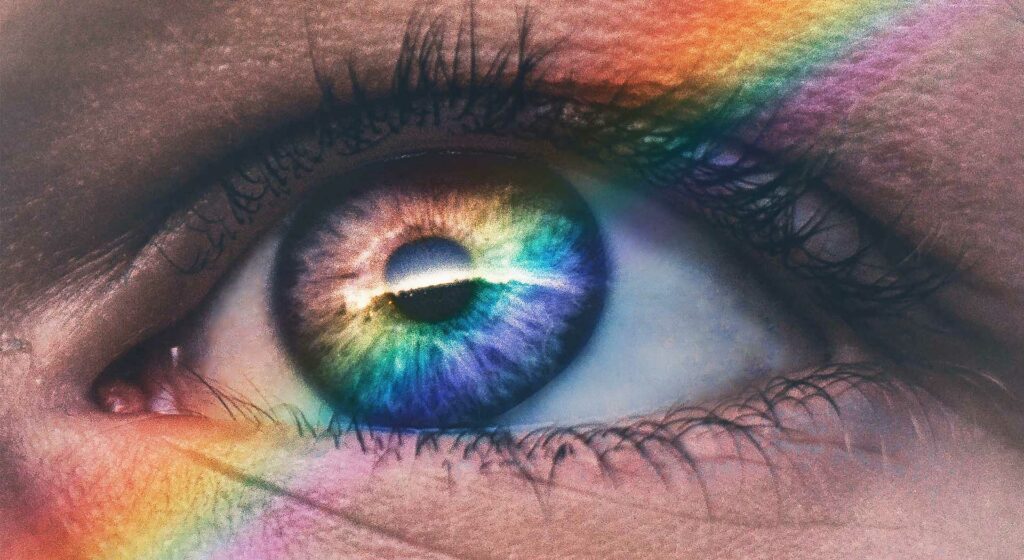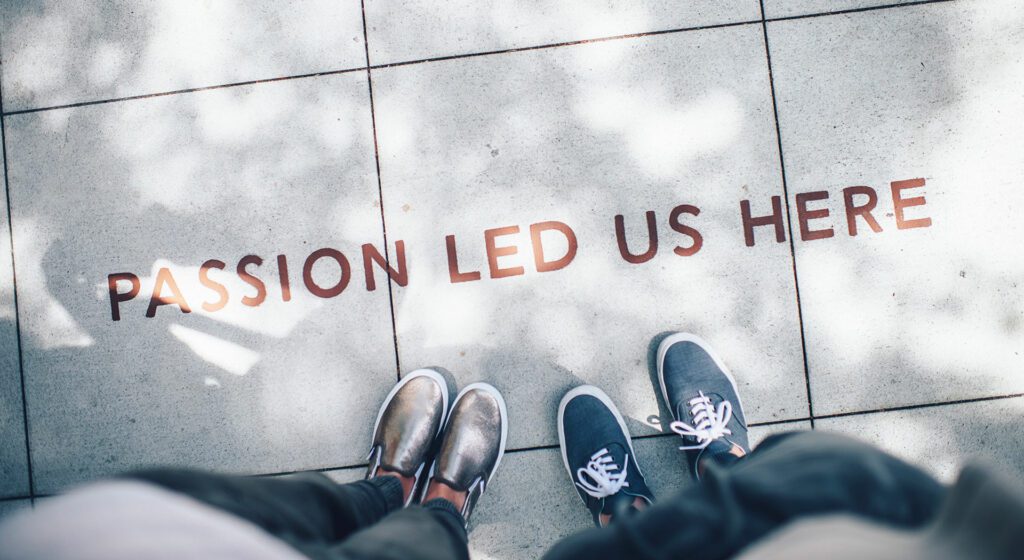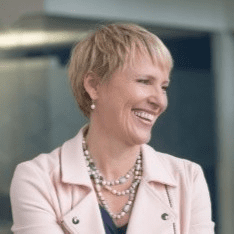Cracking the Code On Diversity & Inclusion
Unconscious bias is hard-wired but simple awareness of our biases isn’t enough.
Why You Should Care
Gender-diverse companies are 15% more likely to outperform their peers.
At a record high, only 7.4% (37 total) of the Fortune 500 are led by female CEOs.
63 studies that explicitly considered a link between changes in bias vs. changes in actions, found no evidence of a causal relationship.
Companies may have been focused on Diversity & Inclusion (D&I) efforts for decades but they have never been more scrutinized. There are very few of the Fortune 500 that don’t have roles that are solely dedicated to diversity & inclusion. While some heads of D&I have limited leadership support or budget to drive outcomes, there are also many organizations with committed leadership that spend hundreds of thousands of dollars on diversity and inclusion efforts.
These companies invest in employee or business resource groups, training to increase awareness, diversity recruiting and employer branding events, and a plethora of other programs. But there’s a long way to go.
gender-diverse companies are 15% more likely to outperform, and ethnically-diverse companies are 35% more likely to do the same
Even with all those efforts, we’re still battling to increase diversity representation, increase the fairness and equity of how employees are treated, and create a corporate environment and culture where all employees feel a sense of belonging where they can contribute and bring their whole selves to work.
There’s also plenty of research that point to the economic value of diversity in business. Research from McKinsey shows that gender-diverse companies are 15% more likely to outperform their peers, and ethnically-diverse companies are 35% more likely to do the same.

Diverse perspectives bring a wealth of value to solving problems. When a group of similar individuals try to tackle a problem, they tend to come up with a limited set of solutions. However, when diverse groups tackle the same problem, they benefit from different perspectives that develop solutions for broader groups and through a lens that addresses a far larger audience.
Harvard Business Review also found that diverse teams are able to solve problems faster than teams of cognitively similar people.
So, why haven’t we cracked the code on D&I after decades of effort and investment and a clear business case for ROI?
Only 7% of the fortune 500 are led by female ceos, Less than 1% are black
We have to look no farther than the representation of diversity (either female or people of color) at the senior-most levels of most organizations. At a record high, only 7.4% (37 total) of the Fortune 500 are led by female CEOs. There are ten (2%) of the Fortune 500 led by Latino CEOs and another ten led by Asians. Less than 1% – a grand total of 4, according to Fortune.com – of the Fortune 500 have a Black CEO. To be fair, progress has been made, but it’s incremental at best.
If we dive deeper into representation of people of color and women in organizations, we tend to see the largest representation of diversity at the lowest levels of the organization with representation decreasing, sometimes precipitously, as the level of leadership increases. McKinsey has been running their annual Women in the Workplace Study since 2015. During that time, increases in the representation of women and women of color at the manager level are less than 5%. Women are still underrepresented at every level in corporate America even though they have been earning more college degrees than men for almost 30 years. The study further states that the biggest obstacle women face on the path to senior leadership is at the first step up to manager. And, the data suggests it is more challenging for people of color.
The Elephant in the Room
There are many reasons for this, but one of them is a bit of an elephant in the room that no one addresses. Mainly, acknowledging that working and collaborating within diverse teams takes work and effort. It is easier and sometimes effortless to connect and communicate with people that think along the same lines as ourselves. If I share a similar background and experiences with someone, it takes less effort for me to understand their perspective. Regardless of the research regarding the business value of diversity, as individuals we almost always take the path of least resistance and default to working most closely with people whom we have “a connection.” This is simply human nature.
Sometimes culture fit ends up being code for “too different from me to feel comfortable.”
We also cloak that connection in words and phrases that validate the value of sameness. Some of the most prominent rationalizations for sameness are attributed to culture fit. I’ve led the recruiting function for multiple Fortune 500 organizations, and a frequent and unsubstantiated rationale for not hiring a diverse talent I hear is, “I don’t think he/or she will be a good culture fit.” Sometimes culture fit ends up being code for “too different from me to feel comfortable.”
From Unconscious Bias to Unconscious Inclusion
We are all victims of our own unconscious biases. There are dozens if not hundreds of corporate courses delivered to employees to build their awareness of what unconscious bias is and how it influences each of us. Because unconscious bias is hard-wired into how we operate and navigate through the world, it’s difficult to recognize when it’s influencing our decisions. It absolutely permeates our view of the world.

If you’re interested in gaining a better understanding of your own unconscious bias, I encourage you to take an Implicit Awareness Test. The tests are part of a global research project led by Harvard University, and they will enlighten you to your own implicit preferences.
Simply knowing you have unconscious bias doesn’t remove your bias or stop you from defaulting to that behavior.
While recognizing one’s own unconscious biases may be illuminating, awareness isn’t enough to drive change. This is the problem with most unconscious bias curriculum. In most cases, awareness alone does not change behavior. Simply knowing you have unconscious bias doesn’t remove your bias or stop you from defaulting to that behavior. That takes conscious effort.
There is a path of progression one goes through from having unconscious bias to conscious bias. In other words, once I am aware of and recognize my biases, they become conscious. The real work comes from taking the step from conscious bias to conscious inclusion, where one takes practical steps to consciously drive inclusion. The final step to unconscious inclusion is where one has ingrained the practices of conscious inclusion to the point that they are part of how one operates; hence, unconscious inclusion.
Making that leap to conscious inclusion is where most unconscious bias training fails. While it’s tempting to believe that awareness and individual altruism – an intrinsic desire for the wellbeing of others – will drive better and more inclusive outcomes, it’s simply not the case. In research published in the Journal of Personality and Social Psychology, a review of 63 studies that explicitly considered a link between changes in bias and changes in actions, found no evidence of a causal relationship. Unconscious bias is so ingrained in who we are and how we interpret the world, that it’s difficult to change based on positive intent alone.

Whether or not we’re aware of our biases, most of us believe we are good people that would never intentionally discriminate against any group. I once saw Mahzarin Banaji, one of the authors of the book, Blindspot: Hidden Biases of Good People, and she said something that lit a halogen light bulb in my mind: “We discriminate by who we choose to help.” In other words, while we believe we’re helping someone, we are unintentionally harming someone else. As an example, if you are a hiring manager making a decision on who to hire, you would never think, “I’m not going to hire this individual because he’s Black.” However, you might think, “I’m going to give this opportunity to this (other) individual because he or she has graduated from my alma mater.” In other words, I’m going to help the person with whom I have a greater affinity. And, when the hiring manager is of the majority (mostly white) group, we tend to perpetuate having more homogeneity.
Most of us believe we are “good people” who would never intentionally discriminate. And we are right.
Most of us believe we are “good people” who would never intentionally discriminate. And we are right. While there are many unfortunate examples of intentional discrimination, the majority of people don’t intentionally discriminate. Much of the discrimination in corporate America is insidiously unintentional because its rooted in unconscious bias and an inherited system of white privilege that’s existed and been reinforced and preserved by the majority group over decades. It’s been part of the fabric of our lives for so long that it’s not easily recognized.
What do we do about Diversity and Inclusion?
We have too many examples in our world today that highlight the inequities of race and gender. We are also at an inflection point where societal and corporate unconscious bias has been made conscious. We are painfully aware that it’s real and it exists. Now we must make the effort and do the work to go from conscious bias to conscious inclusion at a corporate level: Take practical steps to re-wire internal processes, especially those that relate to talent, to be consciously inclusive. We need to develop “trip wires” that interrupt what’s been hardwired – and give leaders the opportunity to pause, assess and self-correct bias-driven talent decisions. Those actions may be different in different organizations, but below is a list of where to start:
1. Acknowledge that this takes effort. In most cases, what comes naturally is what is already hard-wired into how we think (unconscious bias) today. Unwinding that takes ongoing effort and commitment over time. Like any new skill, be honest about the effort required.
2. Evaluate talent attraction strategies. If you plan to increase diversity by hiring diversity, make sure those efforts are focused beyond entry-level talent. Know what is attractive to the diverse populations you seek and tailor your employment value proposition to meet those needs. Get granular in understanding what matters most to different demographics.
3. Hard–wire diversity into external assessment and selection. Consider blind resume submissions to hiring managers for review, and get specific about diverse slate requirements. For example, if your company’s intent is to hire more Black and Hispanic employees, require a candidate slate that includes a minimum of two Black and/or Hispanic candidates. Many companies hide behind the aggregate of diversity (all women and protected classes lumped together as diverse.) However, that aggregate view may hide significant under representation in some groups and over representation in others. For example, in my own function of Human Resources, it would not be challenging to submit a “diverse” slate that included at least two women.
4. Evaluate all internal talent practices. Whether it’s selection for development, internal opportunities, or talent review ratings, organizations should be granular about their vision for future diversity and ensure they have the practices that enable achievement of the vision. For example, whatever methodology is used for talent review assessments (9-box, 4-box, etc.), allow a leader to assess his or her team. However, before heading into a group calibration or finalizing the ratings, let them also see how they have rated their team through a diversity lens. If a leader has rated more women or people of color consistently lower than white male employees, they then have the opportunity to self-reflect, re-assess and make adjustments to their ratings.
5. Role model inclusive curiosity. Make it okay to question and learn how to behave differently in order to create a culture of inclusion. Create a psychologically safe environment where questions of difference aren’t addressed punitively, but are discussed openly and authentically with an eye towards learning from our past to shape a better future.
6. Seek Input. Throughout this journey towards conscious inclusion, consistently seek input from others; especially, those who may not be saying a lot. Do not assume that silence is agreement. In many cases, silence is fear of speaking up or disagreeing with what may seem like a popular opinion. Untapped silence can also create half-baked solutions or will rear its head in other ways that derail efforts.
7. Be a courageous ally. Simply said, an ally is someone who speaks out or takes action in support of individuals from another group. It means you stand up for and expect the same consideration of others as you would for yourself. As a courageous ally, you take individual accountability for amplifying underrepresented voices and interrupt harmful language or behaviors in the moment, before they have the chance to influence a potentially harmful talent decision.
These actions are far easier to put on paper than they are to put into practice. Your organization may already have some of these in place, but the bigger question is how consistently are they used? And, how are leaders held accountable to them? If they’re not used or leaders aren’t held accountable, it’s a bit like the difference between having a gym membership and actually going regularly to the gym.
The good news is that practicing inclusive behaviors and practices will build capability and create a stronger culture of inclusion, where organizations can truly leverage the value of diversity. Like weak muscles, individuals who put in the effort get stronger and more capable over time.
Given the number of companies that are rushing to hire D&I practitioners and consultants, there’s an appetite to do more, and there’s a clear sense of hope and enthusiasm about the potential progress that can be made. My caution is that more people sign up for gym memberships after jumping on the scale after the holidays. Given our current climate, many organizations have jumped on the organizational scale of D&I and are more than dismayed at what it’s telling them – from a D&I perspective, you’re unhealthy. By adding D&I practitioners and committing or re-committing to D&I practices, many companies have purchased the proverbial gym membership. Now they need to demonstrate individual and organization commitment to show up every day and do the work to turn the practice into a healthy habit and reap the benefits.
Sign up to the UNLEASH Newsletter
Get the Editor’s picks of the week delivered straight to your inbox!

Vice President, Global Talent Acquisition and Chief Diversity & Inclusion Officer
